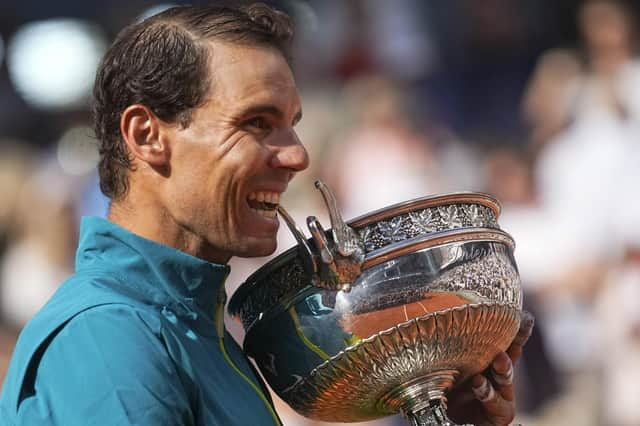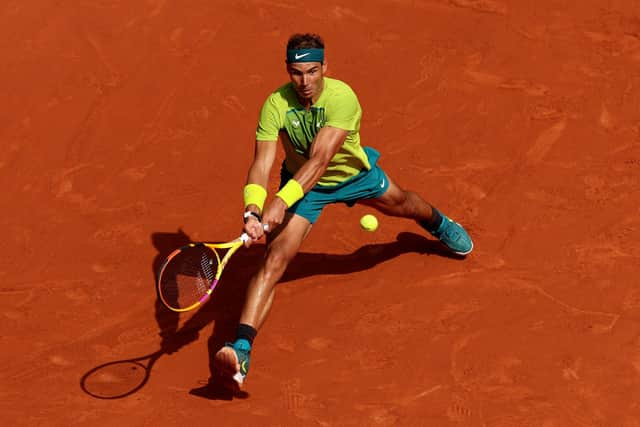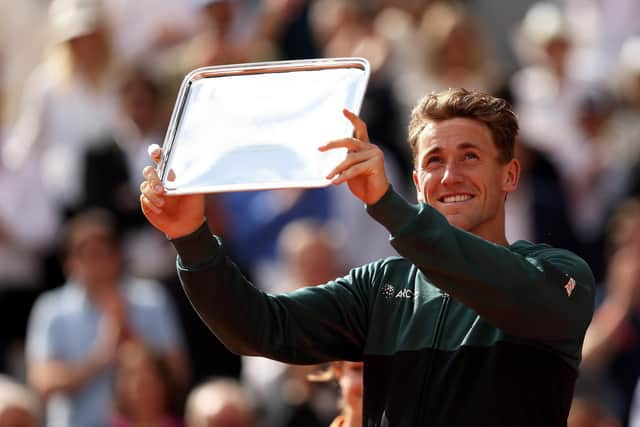Rafael Nadal takes 14th French Open but career hangs by a needle - Spaniard discusses RFA treatment and Wimbledon


He filleted Casper Ruud 6-3, 6-3, 6-0 on Sunday afternoon to reclaim his title, his 14th at Roland Garros.
But what he had kept secret for the duration of the tournament was that his career is hanging not so much by a thread as by a very fine needle.
Advertisement
Hide AdAdvertisement
Hide AdThe chronic issue with the scaphoid bone in his left foot, one that causes agonising pain, has been kept under control these past two weeks by anaesthetic injections before every match. Basically, his foot was numb and he was able to play. But that was only a short-term solution.


What Nadal is resting his future on is radio frequency ablation (RFA) – in essence, sending radio frequencies through a needle and into the nerve in his foot responsible for sending the pain signals back to brain. The radio frequencies burn the nerve and block the pain signals. It will have a similar effect to the anaesthetic jabs but it will be a permanent solution.
“That's the thing that we are planning to do the next week,” Nadal said. “I don't know yet when. If that works, I’m going to keep going. If that does not work, then going to be another story. Then I’m going to ask myself if I am ready to a major surgery that don't guarantee me to be able to be competitive again and it’s going to take a long time to be back.”
Whether the RFA treatment, which is only minimally invasive and can be effective for up to two years, can be done in time for him to recover in time to play at Wimbledon, he has no idea. But, ever the optimist, he is willing to try.
“If it works more or less well and can take it out a little bit the pain that I have,” he said, “if that happens, let's see if I am able to keep going for grass season. Wimbledon is a priority, always have been a priority. If I am able to play with anti-inflammatories, yes [I will play]; to play with anaesthetic injections, no. I don't want to put myself in that position again.”


Last month as Nadal hobbled out of the Italian Open in Rome, the future looked bleak. Yes, his foot could be patched up enough to let him play at Roland Garros, but could he win? It seemed unlikely. And then, as the 15 days of the tournament clicked by, Nadal did what Nadal always does on the Paris clay.
A week ago, he watched his beloved Real Madrid with their 14th Champions League trophy here in Paris. Now here he was, matching his heroes with a 14th title of his own. The slight difference is that it has taken Real Madrid 66 years and countless generations of players to set themselves so far apart from the chasing pack (AC Milan with seven are their nearest rivals); Nadal has taken 18 years and a lifetime of dedication to amass his 14 Coupes des Mousquetaires (Bjorn Borg is next on the list with six).
When Pete Sampras retired in 2002, he was hailed as the greatest male player in history because he had won 14 grand slam titles spread between Wimbledon and the US and Australian Opens. As he thumped a final backhand down the line, Nadal had won that many at Roland Garros alone.
Advertisement
Hide AdAdvertisement
Hide AdHe now has 22 grand slam trophies in all and has pulled two ahead of Novak Djokovic and Roger Federer. He only took the lead in the GOAT (Greatest Of All Time) race in January by winning the Australian Open. After a lifetime of chasing his rivals, the numbers finally showed that he was the greatest player the sport had ever seen. His two-hour, 18 minute demolition of poor Ruud reinforced that position – and the season is only half over. Should his foot be up to the task, the Grand Slam is on: two slams won; two more to go.
Nadal was relentless. He was ruthless. He was brutal. Ruud tried – his forehand, if he was allowed to hit it, was a weapon – but trying to lay a glove on the legend in front of him was all but impossible. The 23-year-old Norwegian was a break down before the posh seats had filled up. He managed to break back but that was courtesy of two double faults and a fluffed forehand from his foe. Nadal was not about to make that sort of mistake again as he restored order and wrapped up the first set in 48 minutes.
Ruud had the temerity to take the lead in the second set but was then made to pay the heaviest of prices. For one, brief moment he was 3-1 up and standing at 30-30. He was making a fight of it. And then Nadal ran away with the match. Ruud did not win another game.
As Nadal played the bully, Ruud gave his father and coach, Christian, increasingly despairing looks. At one point, he even mouthed “F**k me!” to his box after another winner had whistled by him.
Ruud was surplus to requirements on Court Philippe Chatrier; this was Nadal’s day and Nadal’s alone. The crowd were nice to the Norwegian – he's a decent bloke – but as they cheered Nadal’s name to the rafters, their hero was the centre of the Roland Garros universe. It’s been that way since 2005. And if the doctors can work their magic, it may be again.